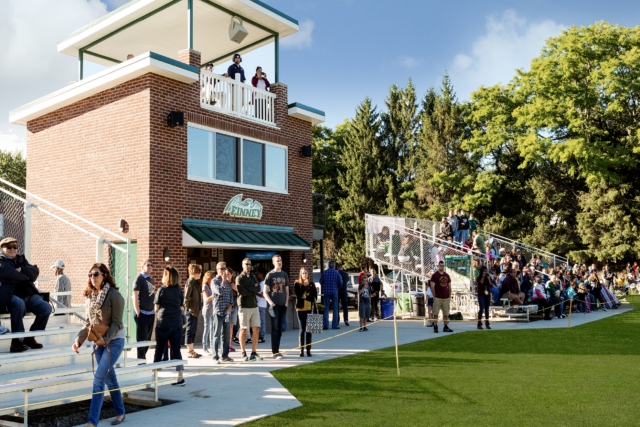As schools, universities and municipal parks become increasingly landlocked, our clients are looking to balance the high demand of their sports programs with available athletic fields. As such, multi-purpose fields are becoming more and more popular. In our most recent blog post, we examine the benefits and drawbacks to multi-sport fields.
In addition to offering flexibility, multi-purpose fields offer an egalitarian approach to athletics. Athletes and administrators alike want to feel a sense of pride when they walk out under the lights on their home field during a homecoming, sectional, or championship game, and providing a multi-sport field allows many teams the opportunity to use the school’s best venue.
The primary element that determines the size and layout of a multi-purpose field is, of course, which combination of sports will need to be played on it. There can be any number of combinations, sometimes with up to 5 or 6 sports. Common combinations can include football, softball/baseball, lacrosse, and field hockey, all on one field. The largest sport that will be played (paired with the appropriate safety zones for each included sport) will regulate the dimensions of the overall field. Required equipment, like bases, batting netting, and goal posts can be designed to be removable and configurable.
What do athletes think of fields with multiple markings and configuration options? Most athletes tell us superfluous markings quickly fade away from their notice. Spectators may have more trouble, however.
Visit our content hub to read our latest in depth blog post for more on this topic.
